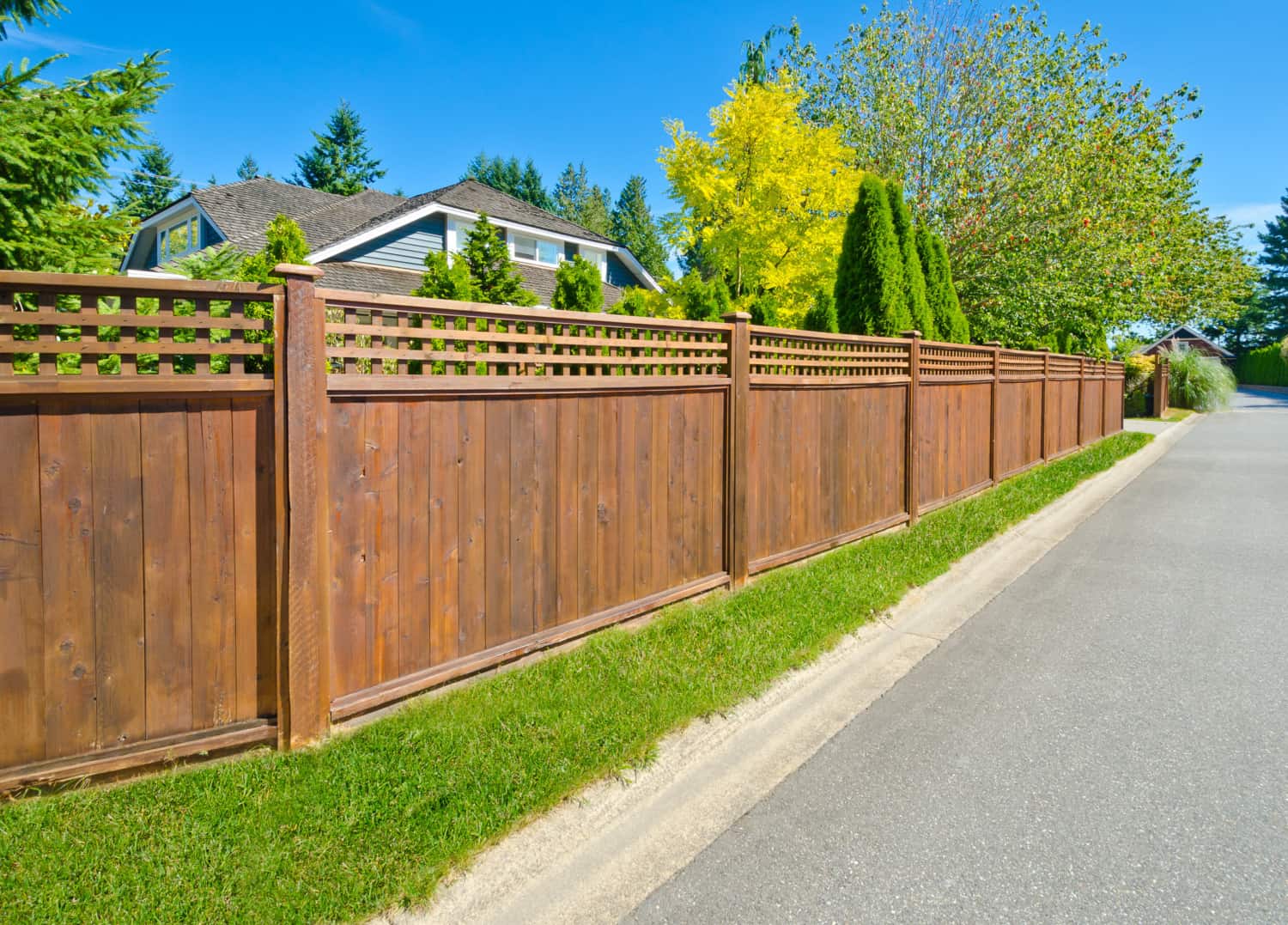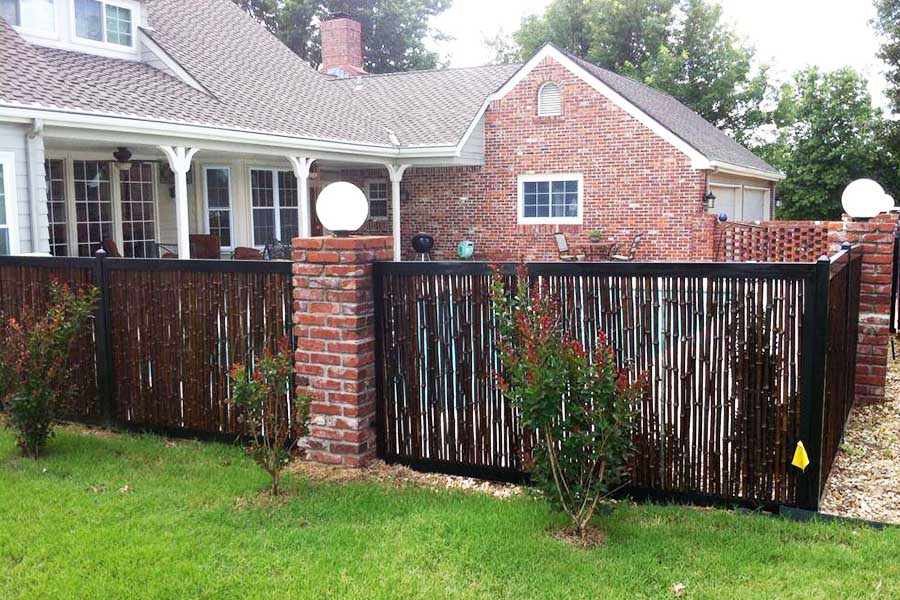All Categories
Featured
When it concerns maintaining a wood fencing, homeowners typically face the decision of whether to stain or paint. Both choices have their cons and pros, and the option eventually depends upon your visual preferences, the type of wood, and just how much maintenance you agree to devote to. Right here's a comprehensive comparison to help you make a notified decision.
The Essentials of Paint and Discoloration
Painting includes covering the timber with an opaque layer of shade. It provides full protection, hiding the timber grain while using excellent security against ecological aspects.
Staining permeates the timber, enhancing its natural charm while including a safety layer. Relying on the kind, stains can vary from clear to solid, permitting differing levels of wood grain presence.
Advantages And Disadvantages of Painting
Pros:
Wide Variety of Colors: Paint deals limitless color options, allowing you to match your fence to your home's exterior or personal style.
Longer Long lasting: High-quality outside paint can last approximately 5-7 years, requiring less frequent reapplication.
Superior Protection: Repaint kinds a thick, strong barrier versus moisture, UV rays, and insects.
Disadvantages:
Peeling Off and Cracking: Over time, paint can peel off or fracture, specifically in areas with severe weather.
Hides Natural Timber Appeal: If you enjoy the all-natural grain of timber, paint may not be the very best selection.
Greater Upkeep: Repainting needs removing the old paint, which can be labor-intensive.
![]()
Pros and Cons of Staining
Pros:
All-natural Appearance: Spots protect and improve the natural beauty of the wood, making it perfect for top notch timber like cedar or redwood.
Much Easier to Reapply: Unlike paint, spots do not split or peel off. Reapplying tarnish commonly calls for less surface prep work.
Flexible Complete Options: Discolorations come in transparent, semi-transparent, and strong selections, offering various levels of coverage.
Cons:
![]()
Much Shorter Life Expectancy: Discolorations, particularly transparent and semi-transparent ones, might require reapplication every 2-3 years.
Minimal Color Alternatives: While discolorations provide all-natural tones, they lack the wide color scheme readily available with paint.
Much Less Protective: Spots penetrate the wood however don't supply as thick an obstacle as paint, making them slightly less safety versus extreme weather.
Aspects to Consider
Visual Preferences: If you desire dynamic shades and full coverage, paint is the way to go. For a rustic and all-natural appearance, go with tarnish.
Timber Type: High-quality timbers with lovely grains gain from staining, while lower-grade woods can be painted for a sleek appearance.
![]()
Climate: In damp or humid environments, paint's thicker obstacle may supply much better protection. In completely dry or modest climates, stains can be sufficient.
Maintenance Commitment: Painting includes less frequent reapplication however even more initiative during touch-ups. Staining needs regular maintenance yet is easier to take care of.
Last Thoughts
Both paint and staining can efficiently safeguard and improve your wooden fence. The very best option relies on your concerns, whether they favor visual appeals, toughness, or ease of maintenance. By comprehending the advantages and drawbacks of each, you can pick the surface that straightens with your demands and guarantees your fence stays a standout feature of your residential or commercial property for years to find.
The Essentials of Paint and Discoloration
Painting includes covering the timber with an opaque layer of shade. It provides full protection, hiding the timber grain while using excellent security against ecological aspects.
Staining permeates the timber, enhancing its natural charm while including a safety layer. Relying on the kind, stains can vary from clear to solid, permitting differing levels of wood grain presence.
Advantages And Disadvantages of Painting
Pros:
Wide Variety of Colors: Paint deals limitless color options, allowing you to match your fence to your home's exterior or personal style.
Longer Long lasting: High-quality outside paint can last approximately 5-7 years, requiring less frequent reapplication.
Superior Protection: Repaint kinds a thick, strong barrier versus moisture, UV rays, and insects.
Disadvantages:
Peeling Off and Cracking: Over time, paint can peel off or fracture, specifically in areas with severe weather.
Hides Natural Timber Appeal: If you enjoy the all-natural grain of timber, paint may not be the very best selection.
Greater Upkeep: Repainting needs removing the old paint, which can be labor-intensive.

Pros and Cons of Staining
Pros:
All-natural Appearance: Spots protect and improve the natural beauty of the wood, making it perfect for top notch timber like cedar or redwood.
Much Easier to Reapply: Unlike paint, spots do not split or peel off. Reapplying tarnish commonly calls for less surface prep work.
Flexible Complete Options: Discolorations come in transparent, semi-transparent, and strong selections, offering various levels of coverage.
Cons:

Much Shorter Life Expectancy: Discolorations, particularly transparent and semi-transparent ones, might require reapplication every 2-3 years.
Minimal Color Alternatives: While discolorations provide all-natural tones, they lack the wide color scheme readily available with paint.
Much Less Protective: Spots penetrate the wood however don't supply as thick an obstacle as paint, making them slightly less safety versus extreme weather.
Aspects to Consider
Visual Preferences: If you desire dynamic shades and full coverage, paint is the way to go. For a rustic and all-natural appearance, go with tarnish.
Timber Type: High-quality timbers with lovely grains gain from staining, while lower-grade woods can be painted for a sleek appearance.

Climate: In damp or humid environments, paint's thicker obstacle may supply much better protection. In completely dry or modest climates, stains can be sufficient.
Maintenance Commitment: Painting includes less frequent reapplication however even more initiative during touch-ups. Staining needs regular maintenance yet is easier to take care of.
Last Thoughts
Both paint and staining can efficiently safeguard and improve your wooden fence. The very best option relies on your concerns, whether they favor visual appeals, toughness, or ease of maintenance. By comprehending the advantages and drawbacks of each, you can pick the surface that straightens with your demands and guarantees your fence stays a standout feature of your residential or commercial property for years to find.
Latest Posts
Don’t Miss Exclusive Auto Repair Specials in Chicago at Montclare Auto Repair
Published May 26, 25
1 min read
Explore Brake Repair & More: Full Services Guide from Montclare Auto Repair
Published May 26, 25
1 min read
Secure Your Investment with Expert Gutter Installment
Published May 21, 25
1 min read